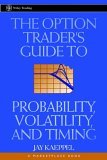Monday, February 26, 2007
Of Open House, Setup and Best Practices
-Jay Kaeppel shows you how to pick bottoms:
*A decline in price and a base (even if its a short one): A stock or commodity that has experienced a meaningful decline and is now consolidating and trading sideways in a range.
* A rising Oscillator indicator: Ideally, the last four trading days will be above their respective levels of 10 trading days prior.
* A bullish MACD indicator: that means that the Fast line is above the Slow line (i.e., the MACD histogram is above 0).
* The 28-day Rate-of-Change is bullish: The 28-day rate-of-change is above its own 28-day moving average
* The RSI Index shows a bullish divergence from price: Ideally the 3-day version of RSI will be displaying a bullish divergence from the market itself i.e., some higher lows for RSI while the market is sideways or down.
-Dr Brett's Profiting From Short-Term Momentum: A Best Practice in Trading. He has recently written a series on Best Practice in Trading. Check out the rest of his posts as well.
-Adam explains why VIX options are dangerous
Week Ahead: 26/2 - 2/3
Mon: Existing Home Sales
Notable earnings:NTES, MRVL, CRDN*, HLF*
Tue: Consumer Confidence
Notable earnings: ADSK, FWLT*, WYNN, PZZA, HANS, AZO, NIHD*
Wed: New Home Sales
Notable earnings: JOYG*, DBRN, PETM, STN, HSP*, EAGL*, OCR*, SWN*, BRL*
Thurs: Personal Income, Personal Spending, ISM Index
Notable earnings: FLR*, DELL
*Big mover stocks for earnings
Thursday, February 22, 2007
Watchlist: Ascending Triangles
Eg. 50 strike call cost $2.0
Stock trading at $51.5
Intrinsic value = 51.5-50 =$1.5
Time value =option price - intrinsic value = $2-$1.5 =$0.5
=> time value is 25% of option price (0.5/2.0)




WMT and CENX have already broken out of ascending triangle recently. Wait for pullback for entry


Wednesday, February 21, 2007
Back to Trading

The above is a chart of SPX on quotetracker. Overall, I'll term yesterday's intraday action as trending despite the sell-off in first 45 mins of trading and then followed by a strong reversal which lasted throughout the rest of the trading day, with only a mild pullback over lunch time. A choppy day would be one that chop around pivot level, up and down.
You can see here that SPX was supported at daily S2 pivot point @1449.5, where it then reverse direction. SPX closed @1459.68, near R2. As John Carter says it, it is rare for prices to go beyond R2 or S2 to hit R3 or S3
Wed: CPI, FOMC minutes
Notable earnings: OII*, ANF, AEM, ADI, WFMI*, VCLK, ERES, GPI, PAAS, MT
Thurs:
Notable earnings: ESV*, BOOM, CHK, JCP
Fri:
Notable earnings: LOW
*Big mover stocks for earnings
Friday, February 16, 2007
Random Links
Here's some links for you to brush up your trading skills:
-Taz trader has put up some new swing trading videos. A very educational site for those interested in learning swing trading.
-And my dear friend at Options The Easy Way has a series of posts on trading bull flags, diagonal channels, head and shoulders etc. He has taken alot of pains to explain and put up the charts with annotations. I know, because I've done it at times and it takes effort and time to do all these, especially with blogger where you can't upload all charts at one go. Which is why I don't do that as often now. Anyways, enough of my ramblings, what I'm trying to say here is that if you follow his trading "assignments", I'm sure you will learn something out of it.
-Jay Kaeppel talks about trading AMZN straddle and LNCR backspread. He is also the author of "The Option Trader's Guide to Probability, Volatility and Timing". Read here for my review of this book
Remember today is options expiration Friday.
GES, NKE: Stock Splits, Dividends

Tuesday, February 13, 2007
Bernie's Take On Market This Week
"Judging by the market's past performance during option expiration week, stocks could be poised to make some gains this week. In columns prior to the January and December expirations, I touched on this trend in the Standard & Poor's Depositary Receipts to post positive results during expiration week.
I think one potential reason for the upside bias in expiration weeks is the unwinding of heavy out-of-the-money puts that accelerates during that week. As these out-of-the-money puts are bought back to capture what little time value is left, those who took the other half of the trade and sold the puts are able to buy back the SPY shares they sold as a hedge against the short put position. This unwinding action in turn helps to add buying pressure to the SPY during expiration week
Since January 2006, the SPY finished only four expiration weeks in negative territory, while the average return during the week comes in at a gain of 0.55 percent..."
Updates
Looks like the market is cautious and waiting for Bernanke to testify before Senate Banking Committee on Wednesday and House Financial Services Committee on Thursday. He is doing this for the first time since Democrats took over Congress. Good luck to him!
And my fellow grad, Option Pundit, introduced a free tool: Options strategy scanner and position simulator. These are great tools, especially when you have more than 1 leg e.g. Iron Condor, backspread etc. Lol, Option Pundit beat me to it in introducing this free tool, as I was about to talk about this one in addition to my series of free resources such as stock screener, probability calculator, Quotetracker, options magazine etc. Well, if you have missed them, just go to Trading Resources in the categories above. Like him, I believe in minimizing trading cost and using free tools as much as possible. I need not say more, check out his site for details on this fabulous tool.
Monday, February 12, 2007
ADSK - Double Top

Watch for ADSK on Monday. It is exhibiting a double-top formation and looks set for breakdown. It tested resistance @ $45 twice, forming 2 tops, with RSI on the decline despite testing high of $45 on second top. $42 is the key level to watch for and preliminary target is $40, where stock gapped up in Nov and has since formed a strong support. It's too early to tell if ADSK can fill the gap.
ITM options Mar 42.5 Put or 45 Put are good, but personally I would prefer 45 Put as it has delta of 0.73 vs 0.52 for 42.5 strike.
Week Ahead 12/2 - 16/2
Notable Earnings: YUM, LCAV, PCLN
Tue:
Notable Earnings: KBH, WFMI, NVDA, AMAT, FOXH, EXPD, EYE
Wed: Retail Sales, Business Inventories
Notable Earnings: GRMN, NTRI, RIG, GES, MGM, LEND, BIDU, DE, TEX, ZBRA
Thurs: Phil Fed
Notable Earnings: A, CECO, EXPE, BHI
Fri: Options Expiration day, Housing Starts, Building Permits, PPI, Leading Indicators
Notable Earnings: BUCY
Forced To Upgrade Blogger
Well, now we are on board the new blogger. Hope it doesn't give us any problems and let us know if you should encounter any difficulties with our blog.
Edit: I think 2 comments (on my Stock Screener post) have been stuck somehow in the system and it only came to my attention after I upgraded to new blogger.
Friday, February 09, 2007
No Trading
Wednesday, February 07, 2007
2 Tales Of Straddle
For myself, straddles are not my bread and butter type plays, I buy straddles occasionally during the earnings season if good opportunities arise. I usually buy ATM, current month or at most next month out as straddles are not cheap, having to buy both the call and put legs. So far, this strategy has been doing ok, with some winners and some losers. Losses are so far within my pre-calculated worst case scenario, but in my opinion, I think the straddle strategy can do better, so I'm looking to fine-tune it in the coming months.
There are similarities and differences in McMillan's and Cohen's strategies. Let's take a quick look here:
Similarities
1.At least 3 months to expiration
2.Exit no later than 1 month to expiration left
3.Look for underpriced options by comparing IV with HV and average IV (though both have a slightly different approach to comparing volatility)
Differences
1.Straddles for earnings announcement or NOT?
->McMillan does not recommend buying straddles ahead of earnings as his study shows this strategy will lose money as traders could be overly optimistic about volatility that earnings announcement might cause
->Cohen's ideal entry for earnings play is 1-2 weeks before earnings announcement
2.Timing of Straddle Purchase
->McMillan's style is to buy straddle on the day before the decision (e.g. FDA, lawsuit etc) is made public
->For Cohen, it's as above: 1-2 weeks before event
3. Probability Calculation
->McMillan wants at least 80% chance the stock will EVER hit one or the other breakeven points at any time prior to expiration.
->No mention by Cohen on this
So what do you think of the above approach by McMillan and Cohen? How's your experience so far with straddles? Don't be shy to share them here.
Monday, February 05, 2007
Week Ahead 5/2 - 9/2
Notable Earnings: APC, BEAV, GRP*, CTSH*, LVS*, SOHO, GOLD, PPDI*, IPS*
Tue:
Notable Earnings: CSCO, BOBJ*, JOE, CAKE, BHP, RATE, CCJ, WIRE*, XRAY, TZOO, TM*, NBR, USNA, IACI
Wed:
Notable Earnings: AFFX*, AKAM, APOL*, ICE, SINA, WHR, EDS, CI*
Thurs: Wholesale Inventories
Notable Earnings: AET*, BRCM, ENER, GSK, ESRX*, WMI, MFE*, PNRA, PSS*, PENN, PEP, RAIL, NVT*, AOC, TBL, DRIV*, DO*, BEC*, BG*
Fri:
Notable Earnings: ASEI, MA, LGF, HAS
*Stocks that tend to have big moves after earnings
Haven't been catching up on blog readings. With the Chinese New Year approaching in about 2 weeks time, we've been busy doing spring cleaning, fixing up things, shopping etc. Next few weekends will get busier, reunion lunches/dinners with extended and immediate families, going to the bank to get new crispy notes for ang bao (red packets), shopping for new year goodies and some more cleaning up to do! And the list goes on...
So here's some good posts that I've just come across. They are not time-sensitive, so if you don't have time to read it now, just bookmark them and read them later.
-Phileo talks about trading for a living. Yes, it's not easy and I don't want to glamourize it. Most people were skeptical and not too supportive when I venture into trading, but I'm thankful that my hubby has given me strong support and encouragement all along.
-More on QuoteTracker PaintBars. Richard sharing how he programs dummy trade entry
-NYSE Scalper did a compilation of fellow bloggers performed in the stock market in Jan 07
-4 different ways of trading GOOG earnings, with 3 of them being profitable
- Six Keys to Trading Success: Lessons From a Successful Trader.
Friday, February 02, 2007
Options Made Easy

As the title of the book goes, author Guy Cohen really makes this book an easy read for traders of all levels. Easy read here doesn't mean no content, what I mean is that it is well-written, clean-cut and very organized.
Options Made Easy has 12 chapters in all. First two chapters are on options basic and options marketplace e.g how to read option chain, order types, margin etc.
New to fundamental analysis and don't know what financial terms such as PEG ratio, interest cover means? Chap 3 covers this neatly, in tabulated form displaying the calculation and the significance of these terms. For newbies who have no clues on head and shoulders, pennants, flags etc, check out Chap 4 on technical analysis.
The next few chapters cover Greeks, Bull Call and Bull Put spreads, Volatility strategies (Straddle and Strangle), Sideways Strategies (Butterfly and Condor). His criteria for these strategies are shared, together with risk profiles and the Greeks for each scenario. And he ends off with a "bonus" chapter combining stock futures with options strategies.
Although Guy Cohen is not in the league of big names like Lawrence McMillan or Bernie Schaeffer, I'm impressed by the clarity of the content. I also like the recap of major learning points at the end of each chapter. My hubby and myself both agreed that this is the most organized and easy to understand book on options we have come across so far. Highly recommended for starters.
Grade: A
Thursday, February 01, 2007
Excellent Charting Tool: QuoteTracker
And if you have read John Carter's Mastering the Trade, you can also look at the stock chart using tick bars, i.e each bar is only formed when certain # of trades are executed. There is also a forum where traders exchange ideas on how to do the programming. But you need to have a trading platform e.g IB, OX so that QuoteTracker can link up the data feed.
Enough said. No referrals for recommending this on my part. Do take a look at Move The Market's post.
Bulls In Control?
"Be that as it may, a market hungry for some upbeat news since earnings season so far has been uninspiring, market participants rallied around proof that the economy is firming, not slowing. The removal of "substantial" to describe the slowdown in housing and addition of "stabilization" was also greeted with enthusiasm, as was the phrase, "Readings on core inflation have improved modestly in recent months," which excluded the word "elevated" from the last meeting"- Briefing.com
I've noticed in the past, the market will reflex action in one direction after Fed statement, but the trend will be in the opposite direction. Markets, after rallying are at some sort of resistance now. Was the rally a genuine one or was the Fed statement an excuse to window-dress at month end? I don't have the answer. Best bet is to wait for Thurs action for more clues. What are your views?


















